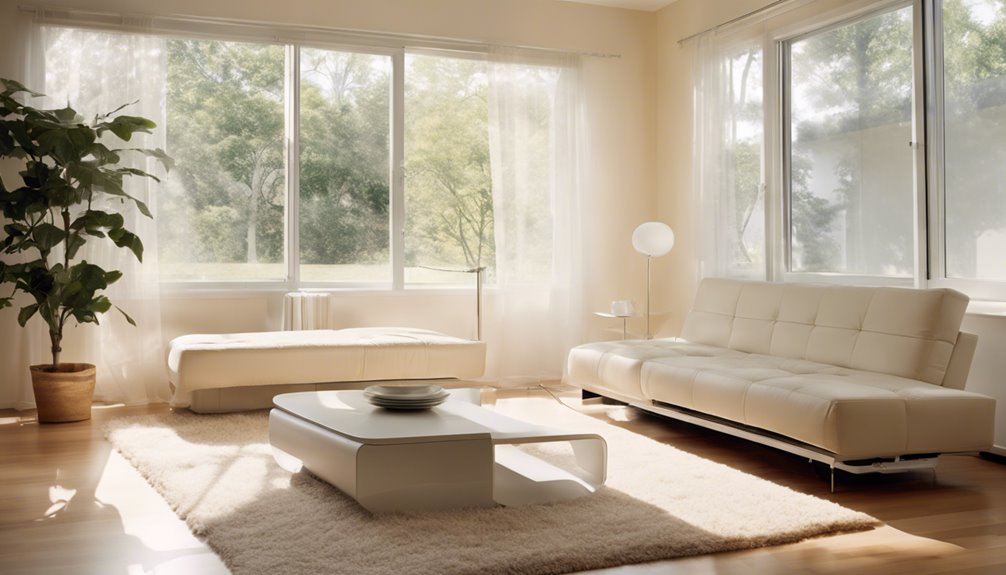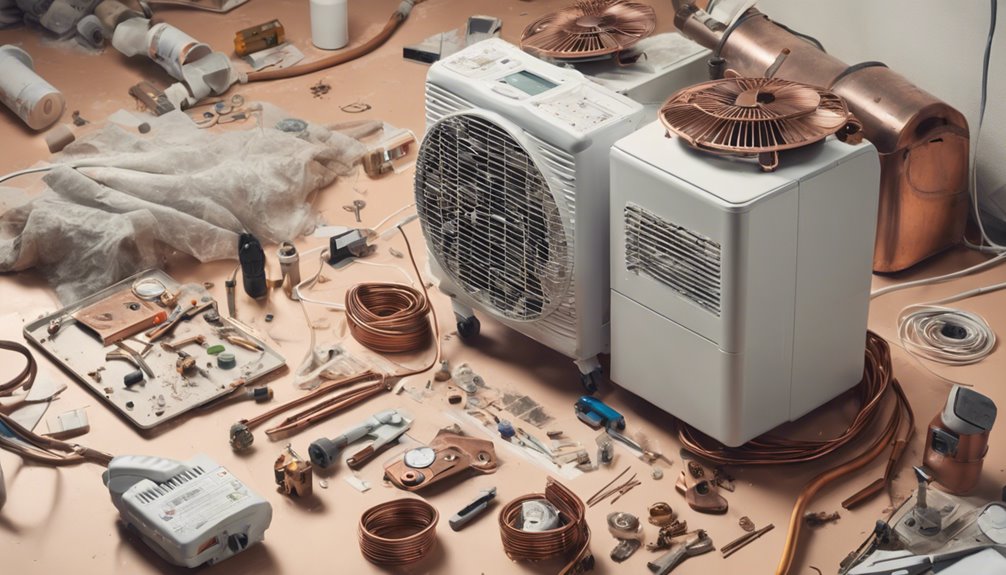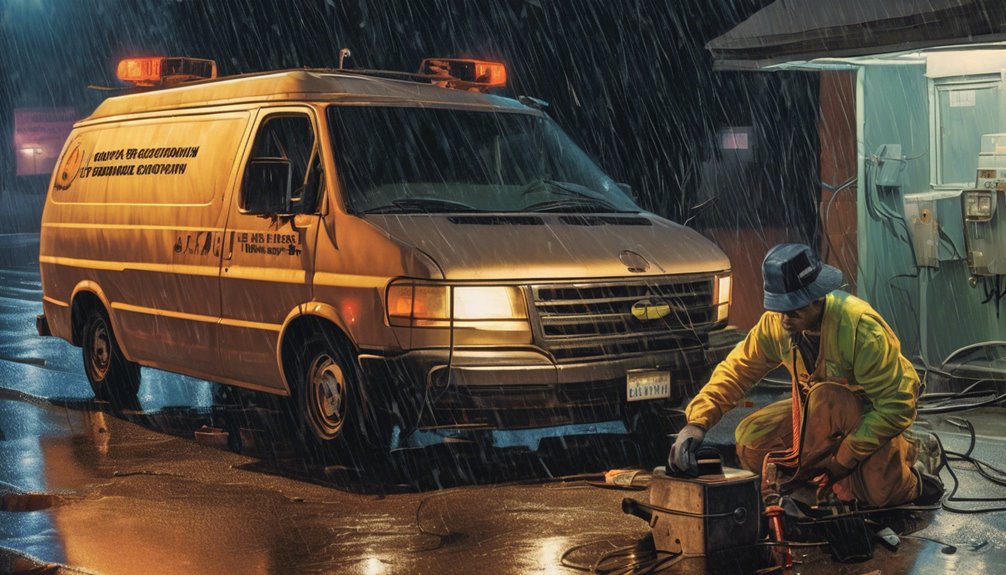When installing a split AC unit, you'll want to get it right from the start. First, choose a qualified installation team with extensive experience and certification. Carefully plan the installation location, ensuring proper airflow and clearance. Next, ensure the unit is correctly sized and capable of meeting your cooling needs. Before installation, inspect and prepare the site, and verify proper wiring and electrical connections. By following these essential tips, you'll be well on your way to a successful installation – and there's more to learn to guarantee optimal performance and energy efficiency.
Key Takeaways
- Ensure the installation team is certified by a reputable organization, such as NATE, to guarantee correct installation and optimal performance.
- Plan the installation location carefully, considering factors like airflow, maintenance, and clearance to ensure efficient operation.
- Calculate the cooling load and select a unit with the correct sizing and capacity to cool the space effectively and efficiently.
- Inspect and prepare the installation site by checking clearance requirements, leveling the ground, and removing obstructions for a smooth installation.
- Verify proper wiring and electrical connections meet the manufacturer's specifications to ensure safe and efficient operation.
Choose a Qualified Installation Team
When it comes to installing your split AC, you can't afford to cut corners on the installation team.
You need a team with extensive experience in installing split AC units, as they'll know how to handle any unexpected challenges that may arise.
Ensure the technicians are certified by a reputable organization, such as NATE (North American Technician Excellence). This certification guarantees they've the necessary skills and knowledge to install your split AC correctly.
A qualified team will assess your space, recommend the right unit size, and install it efficiently.
Don't compromise on the installation team, as it can lead to poor performance, energy inefficiency, and even safety hazards.
Plan the Installation Location Carefully
The location of your split AC installation is crucial to its performance and efficiency.
You'll want to select a spot that allows for proper airflow and easy maintenance. Make sure to maintain a minimum wall clearance of at least 15 inches to ensure unobstructed airflow.
Avoid installing the unit near obstacles like furniture, curtains, or blinds, as they can restrict airflow and reduce efficiency.
Also, steer clear of areas with high humidity, direct sunlight, or extreme temperatures.
Proper placement will help your split AC run smoothly, efficiently, and effectively.
Ensure Correct Sizing and Capacity
You've selected a split AC unit, but its sizing and capacity are critical to its performance and your comfort.
A unit that's too small won't cool your space effectively, while one that's too large will waste energy and increase your utility bills.
To get it right, consider the following factors:
- Cooling load: Calculate the heat gain in your room based on factors like windows, doors, and occupants.
- Room layout: Consider the room's dimensions, insulation, and airflow to determine the ideal capacity.
- Additional features: Think about features like dehumidifying or air purification, which may require a larger unit.
Inspect and Prepare the Installation Site
After selecting the right split AC unit, it's time to shift your focus to the installation site.
Conduct a thorough site assessment to identify any potential issues that could affect the installation process. Check for clearance requirements, ensuring there's enough space for the outdoor unit and proper airflow.
Verify that the site is level and even, and make any necessary adjustments. Remove any obstructions, such as debris or furniture, that could hinder the installation process.
Verify Proper Wiring and Electrical Connections
Safety and efficiency hinge on proper wiring and electrical connections, which is why it's crucial to verify that all connections are secure and meet the manufacturer's specifications.
You'll want to ensure that the wiring is properly sized, securely fastened, and not damaged or pinched.
Perform circuit checks and voltage tests to guarantee the electrical connections are correct and safe.
- Check the wiring diagram to ensure accurate connections
- Verify the voltage supply matches the unit's requirements
- Inspect the wiring for signs of wear, damage, or overheating
Frequently Asked Questions
Can I Install a Split AC in a Load-Bearing Wall?
You're wondering if you can install a split AC in a load-bearing wall, but it's crucial to ensure the wall's structural integrity. You'll need wall anchors to secure the unit, and consult a professional to avoid compromising the wall's strength.
How Often Should I Clean the Outdoor Unit?
You should clean the outdoor unit every 2-3 months to ensure efficient performance. Regular outdoor maintenance is key, and don't forget to clean the filter every 1-2 months to prevent dust buildup and optimize airflow.
Will a Split AC Work With My Existing Ductwork?
You're wondering if your existing ductwork will play nicely with a split AC. Unfortunately, it's unlikely, as split ACs are designed for ductless operation, and integrating them with your ductwork might be complex and costly, requiring significant system integration.
Can I Install a Split AC in a Basement or Crawl Space?
You can install a split AC in a basement or crawl space, but you'll need to address insulation concerns and moisture issues to ensure efficient performance and prevent damage to the unit.
Are Smart Split ACS Compatible With Voice Assistants?
You're wondering if smart split ACs can work with voice assistants, and the answer is yes! Many models offer smart integration, allowing you to control the temperature with voice commands, making it easy to adjust the settings with just your voice.
Conclusion
You've got your new split AC, and now it's time to get it installed. Remember, a proper installation is crucial to ensure your unit runs efficiently and effectively. By choosing a qualified installation team, planning the installation location carefully, ensuring correct sizing and capacity, inspecting and preparing the installation site, and verifying proper wiring and electrical connections, you'll be well on your way to enjoying cool comfort all year round.



